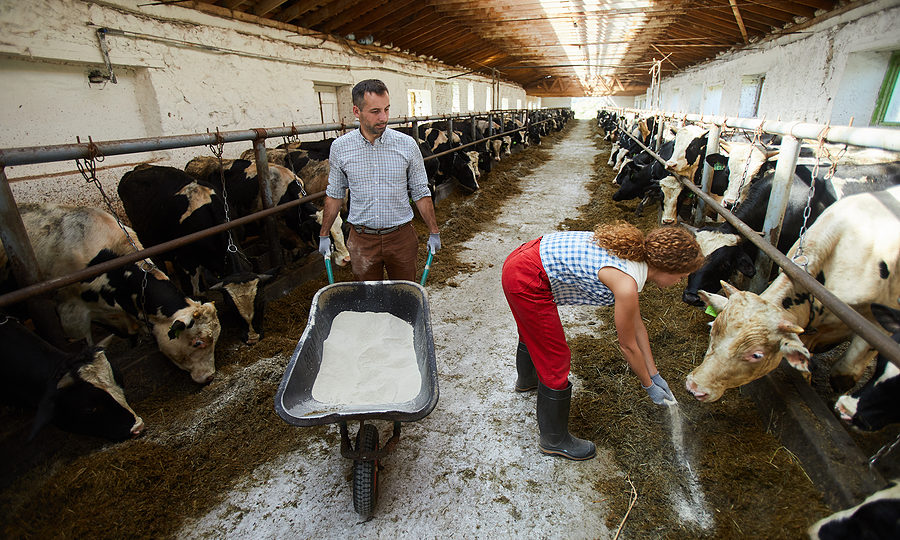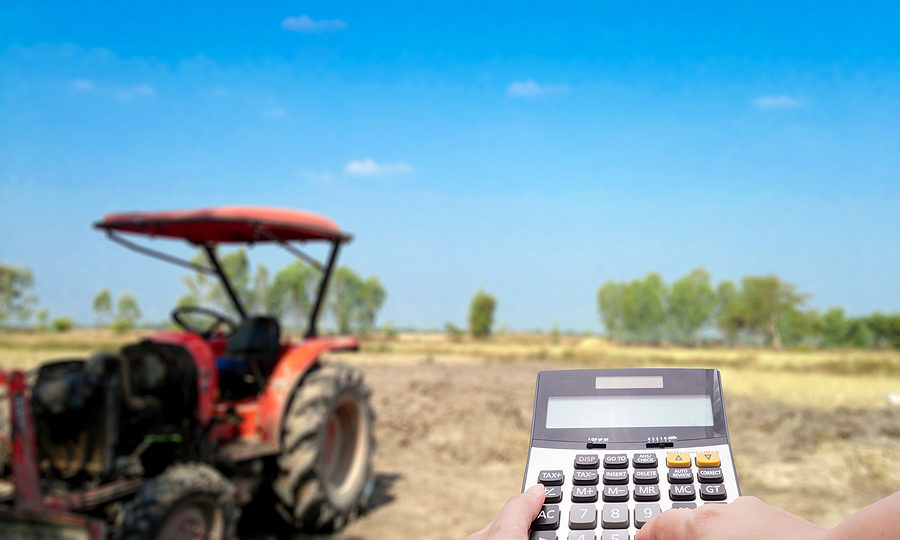-
What is Form 943? A Guide for Agricultural Employers
- Apr 11, 2023
- By Genske, Mulder & Company
- In Uncategorized
- Comments Off on What is Form 943? A Guide for Agricultural Employers
Form 943 is a critical tax document that agricultural employers must be familiar with to ensure compliance with federal tax laws. This form is used to report federal income tax withholding, Social Security, and Medicare taxes from employees’ wages and must be filed annually with the Internal Revenue Service (IRS). Below, we’ll will delve into the details of what Form 943 is, including its purpose, eligibility, deadlines, and filing process.
Understanding Form 943: What Is It and Why Is It Important?
Form 943 is a tax form specifically designed for agricultural employers to report federal income tax withholding, Social Security, and Medicare taxes from their employees’ wages. By correctly completing and submitting this form, agricultural employers can calculate their liability for these taxes and ensure they comply with federal tax laws.
Eligibility Criteria: Who Must File?
Agricultural employers are required to file Form 943 if they meet either of the following criteria:
They paid cash wages of $2,500 or more to farm workers in a calendar year.
They paid less than $2,500 in cash wages but employed 10 or more farm workers.Key Dates
Form 943 is due by January 31st of the year following the taxable year. However, if you file electronically, the deadline is extended to April 30th.
Filing Requirements
To file Form 943, you must provide the following information:
- 1. Employer’s name, address, and EIN (Employer Identification Number)
- 2. Total cash wages paid to farm workers during the taxable year
- 3. Total federal income tax withheld from employees
- 4. Total Social Security and Medicare taxes withheld from employees
- 5. Total amount of taxes owed by the employer
Submitting Form 943
You can file Form 943 electronically using the IRS’s e-file system or submit a paper form via mail. If you opt for paper filing, ensure you complete the form accurately and mail it to the address provided in the form instructions.
When to Consult a Tax Professional
Accurate completion and filing of Form 943 are vital to avoid penalties and interest from the IRS. If you need assistance with this form, consider seeking guidance from Genske, Mulder & Company, LLP. Our team of experts is ready to answer any questions. Get in touch today.
-
Agricultural Accounting Essentials for Farmers
- Apr 11, 2023
- By Genske, Mulder & Company
- In Uncategorized
- Comments Off on Agricultural Accounting Essentials for Farmers
Managing your farm finances is crucial for the growth and success of your dairy farm operation. However, agriculture complexities can make keeping track of expenses and revenue streams challenging. As a farmer, it’s crucial to understand your business’s accounting aspects. It involves keeping your records up-to-date, complying with IRS regulations, accounting for typical small business components, and understanding the unique accounting practices that come with farming – such as dealing with livestock, land, and equipment. This is where agriculture accounting steps in.
What is Agricultural Accounting?
Agricultural accounting refers to the specific accounting procedures for your farming business. Like other companies, it involves maintaining up-to-date records and creating financial reports to monitor the economic well-being of your farm. However, agricultural accounting also incorporates unique aspects specific to farming, like livestock, farm equipment, and land value.
Defining Farm Businesses
The IRS provides clear guidelines to determine what constitutes a farm business. For example, if you “cultivate, operate, or manage a farm for profit, either as an owner or tenant,” you fall under the farming business category.
A farm business encompasses:
- • Livestock
- • Dairy
- • Poultry
- • Fish
- • Fruit
- • Truck farms
It also includes ranches, ranges, orchards, and groves. However, you won’t be classified as a farming business if you contract to harvest a commodity or purchase and resell crops or livestock from a third party.
Accounting Methods for Agricultural Businesses
When it comes to agricultural accounting, farm businesses typically employ one of two methods: cash basis or accrual accounting.
Cash Basis Method
Most farmers favor the cash basis method as it accounts for expenses when they are paid and receivables when payment is received. Though less precise than accrual accounting, it is more straightforward.
Accrual Basis Method
Some farmers, particularly those who run corporations with gross receipts of $26 million or more annually, are obliged to use accrual accounting. This method is also compulsory if you’re a tax shelter or in a partnership with a corporation with the same gross receipts.
Accrual accounting enables farmers to account for expenses when bills are received, not when they’re paid. If the farm maintains an inventory, this method determines gross income. Though it offers more accurate accounting, it is more complicated than the cash basis method.
Understanding Farm Income, Deductions, and Tax Forms in Agricultural Accounting
Defining Farm Income
Farm income comprises various revenue streams, such as earnings from operating a farm, selling crops, and receiving government subsidies. Therefore, it is vital to recognize what qualifies as farm income to ensure accurate recordkeeping and avoid penalties or increased IRS scrutiny.
Are farm business expenses deductible?
Indeed, farmers can deduct eligible expenses connected to their business operations. However, to be considered deductible, these expenses must be ordinary and necessary within the context of your farm. Examples of such expenses include supplies, livestock feed, insurance, and recordkeeping, among others.
Which expenses are non-deductible for farm businesses?
While many farming expenses can be deducted, not all are eligible. Personal expenses, such as those related to your dwelling or vehicle maintenance, are not tax-deductible.
Tax Forms
Sole proprietor farmers must file a Schedule F Profit or Loss from Farming form. This form lets you report your net profit or loss for the year. In addition, your farm’s profits and losses should be included on Form 1040 to determine your total tax liability for that year.
Discover the Client-Focused Approach of Genske, Mulder & Company, LLP
Our team at Genske, Mulder & Company, LLP comprises individuals with extensive backgrounds in the agricultural industry, giving them firsthand knowledge and understanding of your farm business. We specialize in agricultural accounting services for farmers of all types, offering exceptional value-added solutions. We are dedicated to empowering our clients with knowledge. Get in touch today and learn how we can help you Grow and Thrive.
-
Navigating Farm Income Averaging
- Apr 10, 2023
- By Genske, Mulder & Company
- In Uncategorized
- Comments Off on Navigating Farm Income Averaging
In agriculture, it’s common knowledge that farm income can fluctuate drastically yearly. Factors such as weather conditions, crop diseases, and market prices are unpredictable and largely beyond farmers’ control. This sometimes-volatile nature of the agricultural industry needs unique financial planning strategies, including farm income averaging.
Farm income averaging is a specialized tax planning tool designed specifically for farmers. It allows them to spread some or all their current year’s farm income equally over the preceding three years. This strategy proves particularly advantageous during high-income years when there’s a risk of escalating into a higher tax bracket. Using income averaging, current-year income, which would otherwise be taxed at a higher rate, is averaged out over the lower tax brackets of the previous three years.
Understanding Farm Income
Farm income, as defined by the IRS, is the business of cultivating land or raising or harvesting any agricultural or horticultural commodity. Here are a few common examples of where farm income may be reported:
- – Schedule F: This is typically used for reporting farm income.
- – Schedule K-1: This is used for income passed through farm partnerships or farm S-Corporations.
- – W-2s: These are for wages received by S-Corporation shareholders from Farm S-Corporations.
- – Form 4797: This is used for reporting Gain on the Sale of Farm Assets such as equipment, breeding stock, etc., used in a farm business.
- – Form 4835: This is used for reporting Crop share rent income.
What Doesn’t Qualify as Farm Income for Income Averaging?
While many types of income fit the farm income definition, not all qualify for income averaging. These include gain on the sale of land used in farming operations, cash rent for farmland, contract harvesting of an agricultural or horticultural commodity grown or raised by someone else, and the mere buying or reselling of plants or animals grown or raised by someone else.
Other Factors to Consider
The choice to average farm income is made when filing the tax return after the year’s end. Farm income averaging doesn’t alter the income reported in prior years but utilizes any portion of lower tax brackets unused in those years. Importantly, you don’t have to report farm income in the previous years to use income averaging for current-year farm income. It should also be noted that the election to average farm income doesn’t affect self-employment taxes in the current or prior years.
Reach Out to Genske, Mulder & Company, LLP Experts
Farm income averaging is a valuable financial planning tool that enables farmers to better cope with the industry’s volatility. However, its benefits are only sometimes applicable and should be considered part of a more comprehensive array of year-end planning strategies for farmers. Should you have any questions regarding farm income averaging or need advice on leveraging it, don’t hesitate to contact us today.
-
What is Farm Income?
- Apr 10, 2023
- By Genske, Mulder & Company
- In Uncategorized
- Comments Off on What is Farm Income?
Farm income is the profits and losses generated through managing and operating a farm or an agricultural business. It includes earnings from selling crops, livestock, and other farm-related goods and services. As a result, the tax implications for farm income are slightly different from non-farm income, requiring farmers to report it using a Schedule F form on their tax returns. Learn more about farm income below.
Breakdown of Farm Income
Farm income can be categorized into four primary segments:
• Gross Cash Income: This involves all receipts from the sale of crops, livestock, and other farm-related goods and services, as well as direct governmental payments.
• Gross Farm Income: Gross cash income, augmented with non-monetary income, such as the value of home consumption of self-grown food, constitutes gross farm income.
• Net Cash Income: This is the gross cash income minus all cash expenses like feed, seed, fertilizer, property taxes, interest on debt, wages, contract labor, and rent to non-operator landlords.
• Net Farm Income: Net farm income is calculated by subtracting both cash and non-cash expenses (like capital consumption and farm household expenses) from the gross farm income.Net Cash Income can also be viewed as a short-term measure of cash flow.
Reporting Farm Income: Schedule F
Farmers operating as sole proprietors for tax purposes are required to report their agricultural business’s net profit or loss using Schedule F (titled “Profit or Loss from Farming”). This category includes livestock, dairy, poultry, fish, and fruit farmers, along with owner/operators of plantations, ranches, ranges, nurseries, or orchards.
Schedule F enquires about your primary farming activity or crop, your income from selling livestock, produce, grains, or other products, and whether you obtained farm income from cooperative distributions, agricultural program payments, Commodity Credit Corporation loans, crop insurance proceeds, federal crop disaster payments, or any other sources. The method for accounting income depends on whether you use the cash or accrual method.
Tax Deductions for Farming Business
Using Schedule F, you can claim tax deductions for your farming business, lowering your tax bill. Potential deductions encompass expenses paid for a business vehicle, chemicals, conservation, custom hire, depreciation, employee benefits, feed, fertilizers, freight and trucking, gasoline and other fuel, insurance, interest, hired labor, pension, and profit-sharing plans, repairs and maintenance, seeds and plants, storage and warehousing, supplies, taxes, utilities, veterinary fees, and rent or lease fees for vehicles, machinery, equipment, land, and more.
IRS Publication 225: The Farmer’s Tax Guide
The Farmer’s Tax Guide, also known as IRS Publication 225, is a vital resource for individuals involved in agribusiness. It explains how the federal government taxes farms and outlines the different accounting methods that farmers may employ for running their operations. This guide is instrumental in understanding how farmers must report farm income.
Understanding farm income and its tax implications is crucial for anyone involved in the farming or agricultural business. It allows for effective financial planning and better management of farming operations. If you would like additional advice or guidance about your farm income, contact us today.
Categories
Categories
- Uncategorized (24)
Iframe Video
Twitter Feed
- Our Twitter feed is currently unavailable but you can visit our official twitter page @ThemeForest.




